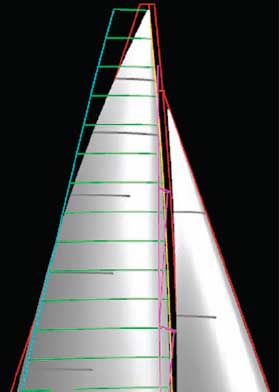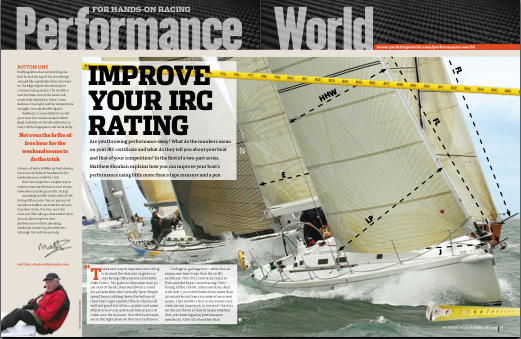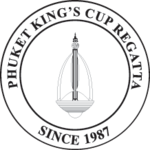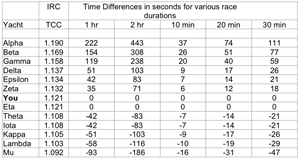IRC Hull Factor (HF) assessment is today to all intents and purposes wholly objective.
The concept of HF first appeared in CHS, the Channel Handicap System, back in the 1980s. Initially, HF was wholly subjective. It was assessed by the two IRC rating offices using little more than intuition. With at that time CHS being largely an escape route from IOR for cruiser/racers and with only a small fleet centred largely in the UK and France, this worked perfectly satisfactorily. With the international growth of CHS through the 1990s, continued subjectivity plainly could not last.
A significant part of the IRC Technical Committee’s work during this period was therefore aimed at developing ‘objective methods to answer a subjective question’. Thus, when at the end of the 1990s CHS became IRC, HF was already very largely objectively assessed. With continued work since then, HF assessment is today to all intents and purposes wholly objective.
HF, perhaps because of its very nature, continues however to cause upset among owners and designers. The designers have a pretty good idea of what works under IRC in terms of the basic design parameters (length, weight, beam, draft, sail area, etc). But then along comes HF to upset all of that!
Within the confidentiality constraints of a secret rule, plainly we cannot divulge the complete inner workings. We can however attempt to de-mystify and to explain the concepts.
What is HF trying to achieve? It is addressing the otherwise unrated elements of a boat. It is making a judgement of the likely ‘efficiency’ of the boat on a scale between pure cruiser and pure racer. A thermometer perhaps!
IRC philosophy is to permit cruisers to race against cruiser/racers against racers with all boats having a chance of success. This then of course does not prohibit the design, construction and racing of one- off ‘IRC designs’. It does mean that IRC must at the very least attempt to recognise these designs for what they are. And that is where HF comes in with the aim not of ‘killing’ the boat, but rather of identifying and quantifying that under the apparent finery of a cruiser hides a racer.
How then does this happen? The starting point is the information contained on the IRC application form: Hull form, Keel Type and shape, Rudder, Hull material, Accommodation and Accommodation Materials, Other Appendage configuration. Expanding a little on these:
We do not have the hull lines. We do know the general hull form, whether it is fair form, IOR inspired, clinker etc.
We know quite a lot about the keel, particularly with in 2008 the publication of 13 generic keel types. We know whether it is just a fin or whether it is some form of low CG keel, whether or not it is a lifting keel, etc, etc.
We know how many rudders the boat has and whether these are transom mounted, hung on a skeg or are spade configuration.
We know what the boat is built from. Concrete through steel, aluminium, glassfibre, to the most exotic and up to date carbon and nomex.
HF Le Theromometre de l’IRC Final MJU 080206 1 Mike Urwin & Jean Sans. February 2008We know how it is fitted out. Is it a completely stripped out dayboat or grand prix inshore racer? Or is it a fully fitted world girdling cruiser with running hot and cold everything. Or, as nearly always, something in between. And what materials have been used in the construction of the interior?
We also know whether or not it has a novel appendage configuration. A canting keel or twin lifting daggerboards perhaps.
And through the boat’s displacement/length ratio we have some idea of parametrically how heavy it is.
And finally, we have any other information provided by the designer/builder/owner which may influence any of the above. The inclusion of some completely novel feature for instance.
And how is this applied?
We know that every aspect of a boat will have some affect on its speed. Weight carried as fitout is less ‘efficient’ in weight terms than the same weight as lead in the keel bulb. Concrete construction will result in a higher proportion of all up weight in the structure than steel than aluminium than glassfibre than carbon/nomex. A full fitout results in more weight distributed through the boat; higher pitching moment and in all probability a higher vertical centre of gravity. Etc etc. We can then assign a numerical value to each element using objective rules and methodologies developed over the years.
Combining these then gives us HF
That addresses new boats. When an existing boat is modified, a new keel or rudder perhaps, or changes to fitout (which must of course be declared), the same process is used.
So, unlike the early days of CHS, HF assessment under IRC is as objective as it is realistically possible to be. Yes, of course there are subjective elements that we can never entirely escape. Is an extra berth worth as much as a microwave oven, a watermaker or a flat screen TV? But that is avoided by taking a global view of fitout rather than applying the principles of the contents of a trolley at the supermarket checkout! And anyway, the differences in the final assessed value of HF would be small, and even smaller in terms of TCC.
And putting the whole thing into context, ultimately within the sensible range for a particular concept of boat, the effect of HF on TCC is small, generally less than 0.005. Certainly smaller than the apparent importance ascribed to it by many owners and designers. In reality, the effect is far less than the gains to be made from hull preparation, rig tune, sails, navigation, tactics, etc......
Jean SANS and Mike Urwin February 2008
 Friday, July 8, 2011 at 11:48AM
Friday, July 8, 2011 at 11:48AM  • Additional downwind sail area provides a good trade-off between rating and performance.
• Additional downwind sail area provides a good trade-off between rating and performance.



